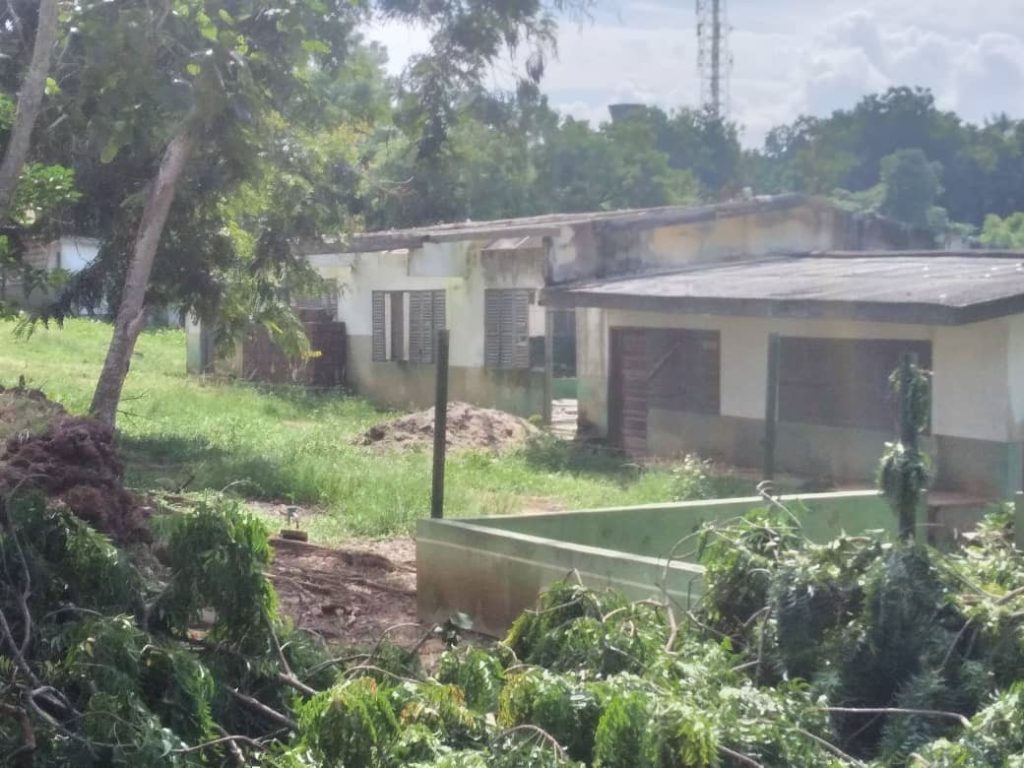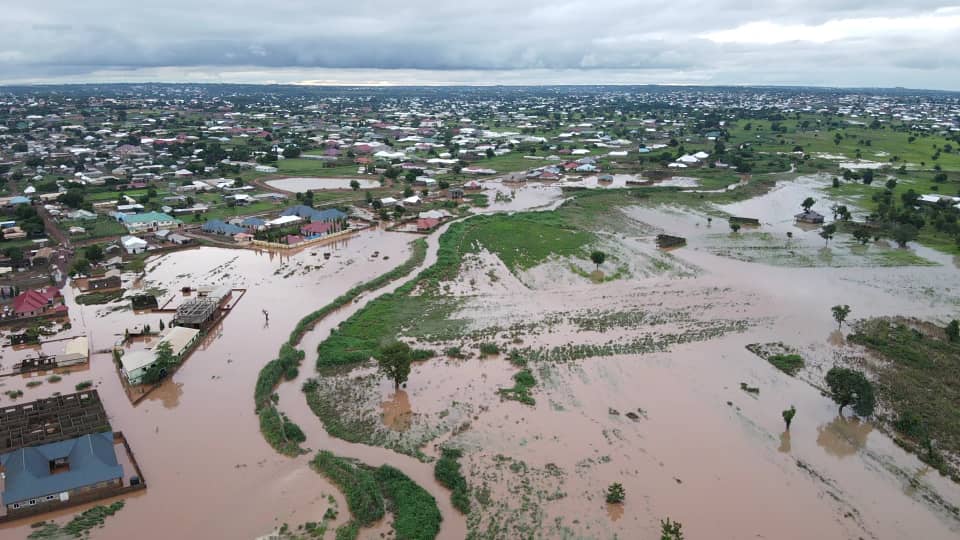In recent years, the world has witnessed a surge in extreme weather events, from devastating hurricanes and heatwaves to unprecedented droughts and wildfires. As scientists continue to study the causes behind these occurrences, one factor stands out: climate change. The link between climate change and extreme weather events has become increasingly evident, raising concerns about the future of our planet. In this article, we will delve into the intricate connection between climate change and extreme weather events, exploring the scientific evidence, the impacts on human lives and ecosystems, and the urgent need for action. By understanding this link, we can better comprehend the gravity of the situation and work towards implementing effective strategies to mitigate the effects of climate change on our environment and safeguard the well-being of future generations.
Understanding the Science Behind Climate Change
Understanding the science behind climate change is vital to comprehend the connection between it and extreme weather events. Our planet’s climate is impacted by both natural and human-induced factors. Nonetheless, over the last century, human activities including burning fossil fuels and deforestation have substantially contributed to the surge in greenhouse gas emissions. These emissions trap heat in the Earth’s atmosphere, resulting in a rise in global temperatures, commonly known as global warming. Understanding the science behind climate change is vital to comprehend the connection between it and extreme weather events. Our planet’s climate is impacted by both natural and human-induced factors. Nonetheless, over the last century, human activities including burning fossil fuels and deforestation have substantially contributed to the surge in greenhouse gas emissions. These emissions trap heat in the Earth’s atmosphere, resulting in a rise in global temperatures, commonly known as global warming.
The increase in global temperatures has far-reaching consequences, including the alteration of weather patterns. Climate change intensifies the water cycle, causing more frequent and severe weather events. Warmer temperatures lead to increased evaporation, resulting in heavier rainfall and more intense storms. The scientific consensus is clear: climate change is a significant driver of extreme weather events.
Types of Extreme Weather Events
Extreme weather events come in various forms, including hurricanes, heat waves, droughts, floods, wildfires, and severe storms. These occurrences can be detrimental to both human lives and the environment. It is crucial to understand the different types of extreme weather events to develop effective strategies to mitigate their effects.
Hurricanes, also known as tropical cyclones or typhoons, are intense storms with strong winds and heavy rainfall. They develop over warm ocean waters and can cause widespread destruction, including flooding and damage to infrastructure. Heatwaves happen when a region experiences abnormally high temperatures for an extended period, leading to heat-related illnesses and straining energy resources as people rely on air conditioning to combat the extreme heat.
Droughts are prolonged periods of below-average rainfall that can have severe impacts on agriculture, water supply, and ecosystems. They can result in crop failures, water scarcity, and an increased risk of wildfires. Floods happen when an area receives excessive rainfall, causing rivers, lakes, or other bodies of water to overflow, resulting in property damage, displacement of communities, and the spread of waterborne diseases.
Wildfires are another type of extreme weather event that has gained significant attention in recent years. These fires are often fuelled by dry conditions and strong winds, and they can spread rapidly, destroying vast areas of vegetation and threatening human settlements. Lastly, severe storms, such as thunderstorms or tornadoes, are characterized by high winds, heavy rainfall, and sometimes hail or lightning. These storms can cause property damage, power outages, and even loss of life.
The Relationship between Climate Change and Extreme Weather Events
Scientists have been studying the relationship between climate change and extreme weather events for decades, and the evidence supporting their connection continues to mount. While it is challenging to attribute a specific weather event solely to climate change, researchers use statistical analysis and climate models to determine the likelihood and severity of extreme weather events in a changing climate.
One crucial factor contributing to the link between climate change and extreme weather events is the increase in atmospheric moisture content. As global temperatures rise, the atmosphere can hold more water vapor, leading to heavier rainfall during storms. This increased moisture also contributes to more intense hurricanes, as warm ocean waters provide the energy needed to fuel these storms.
Furthermore, climate change can alter atmospheric circulation patterns, such as the jet stream, which influences weather patterns. Changes in the jet stream can result in prolonged heatwaves or droughts in certain regions, as well as the stalling of weather systems, leading to prolonged periods of heavy rainfall and increased flooding.
It is important to note that climate change does not cause every extreme weather event, but it does make them more likely and more severe. The increased frequency and intensity of extreme weather events observed in recent years align with the predictions made by climate models. This evidence underscores the urgent need to address climate change and its impact on extreme weather events.
Case Studies of Extreme Weather Events Linked to Climate Change
Let’s take a closer look at some real-life examples to understand the correlation between climate change and extreme weather events. Hurricane Harvey, which hit Texas and Louisiana in 2017, is a prime example. The hurricane caused unprecedented flooding due to record-breaking rainfall. Although storms are a natural occurrence, climate change made Hurricane Harvey more likely. This is because warmer ocean temperatures provided the necessary energy for the storm, and increased moisture content in the atmosphere resulted in heavier rainfall.
Another noteworthy event was the 2003 European heatwave, which claimed thousands of lives due to its intensity and duration. Climate change played a significant role in amplifying this heatwave, making it more severe and more likely to occur. The rise in the frequency of such heat waves in recent years is evidence of the impact of climate change on extreme weather events.
These case studies, along with several others, show the real-life effects of climate change on extreme weather events. They remind us that climate change has tangible and devastating impacts on communities worldwide, and these effects are not confined to scientific models.
The Economic and Social Impacts of Extreme Weather Events
Severe weather conditions have extensive implications for the economy and society, affecting nations worldwide, regardless of their development status. The economic damage caused by these events is staggering, with billions of dollars being spent on recovery efforts, infrastructure repairs, and insurance claims. According to the World Bank, the cost of adapting to climate change-related events could reach $100 billion annually by 2050.
Apart from the financial toll, severe weather conditions also have significant social consequences. These events can lead to the loss of homes, displacement of communities, and the disruption of essential services such as healthcare and education.
Moreover, severe weather events can have long-term psychological effects on individuals and communities. The stress and trauma experienced during and after such events can contribute to mental health issues, including anxiety, depression, and post-traumatic stress disorder. Recognizing and addressing the social and mental health impacts of severe weather conditions is crucial for building resilient communities in the face of climate change.
Mitigation Strategies to Address Climate Change and Extreme Weather Events
Addressing climate change and mitigating the impacts of extreme weather events requires a multi-faceted approach. One of the most effective strategies is to reduce greenhouse gas emissions by transitioning to cleaner and more sustainable energy sources. This involves investing in renewable energy technologies such as solar and wind power, as well as improving energy efficiency in various sectors, including transportation and buildings.
Another crucial aspect of mitigation is the conservation and restoration of natural ecosystems, such as forests and wetlands. These ecosystems play a vital role in absorbing carbon dioxide and regulating the water cycle, helping mitigate climate change’s impacts and reduce the risk of extreme weather events. Protecting and restoring these natural habitats also helps preserve biodiversity and provides numerous co-benefits, such as improved air and water quality.
Additionally, adapting to climate change and building resilience to extreme weather events is essential. This includes implementing measures such as improved infrastructure design to withstand storms and flooding, enhancing early warning systems, and diversifying agricultural practices to cope with changing climate conditions. Investing in research and development to develop innovative solutions and technologies for adaptation is also crucial.

Adaptation Measures to Reduce the Impact of Extreme Weather Events
To minimize the impact of severe weather, use nature-based solutions like coastal mangroves, green spaces, and climate-resilient infrastructure. Improve disaster preparedness, risk assessments, and emergency response plans. Educate and engage communities to better prepare for extreme weather events.
The Role of Government and International Organizations in Addressing Climate Change and Extreme Weather Events
Addressing climate change and mitigating the impacts of extreme weather events requires collective action at all levels, from local communities to national governments and international organizations. Governments play a crucial role in setting policies and regulations that promote sustainable practices and reduce greenhouse gas emissions. They can incentivize the transition to renewable energy, support research and development for clean technologies, and implement measures to promote energy efficiency.
International organizations, such as the United Nations and the World Bank, also play a vital role in addressing climate change and extreme weather events. These organizations facilitate cooperation and coordination among nations, provide financial and technical assistance to developing countries, and promote knowledge sharing and capacity building.
In recent years, there has been increasing recognition of the need for global collaboration to tackle climate change. The Paris Agreement, signed by nearly all countries, aims to limit global warming to well below 2 degrees Celsius above pre-industrial levels and pursue efforts to limit the temperature increase to 1.5 degrees Celsius. The agreement also emphasizes the importance of adaptation and support for developing countries in implementing climate action.
Conclusion: Taking Action to Combat Climate Change and Prepare for Extreme Weather Events
The connection between climate change and extreme weather events is undeniable. As the scientific evidence mounts, it is clear that urgent action is necessary to mitigate the impact of climate change and prepare for the increasing frequency and severity of extreme weather events. By understanding the science behind climate change and various types of extreme weather events, we can comprehend the complexity of the issue and its far-reaching impacts. Case studies provide tangible examples of the link between climate change and extreme weather events, highlighting the need for immediate action.
Addressing climate change and mitigating the impacts of extreme weather events requires a multi-faceted approach. This approach involves reducing greenhouse gas emissions, conserving and restoring natural ecosystems, implementing adaptation measures, and investing in resilient infrastructure. Governments and international organizations play a crucial role in facilitating and supporting these efforts.
The need to act on climate change and prepare for extreme weather events is urgent. By taking decisive action, we can safeguard the well-being of future generations and ensure a sustainable and resilient future for our planet. Let us embrace this challenge as an opportunity to create a better world for ourselves and future generations. Together, we can make a difference.


